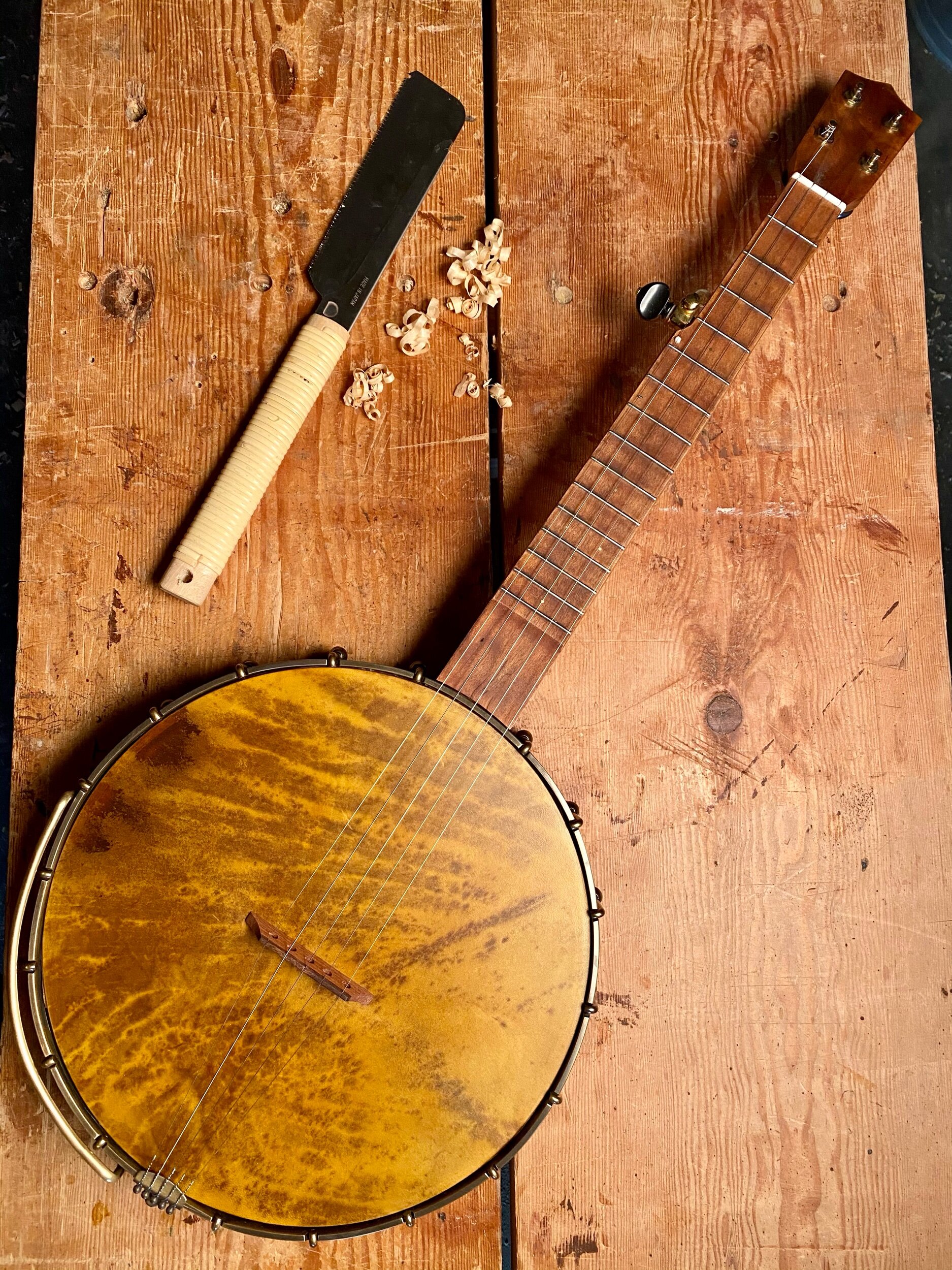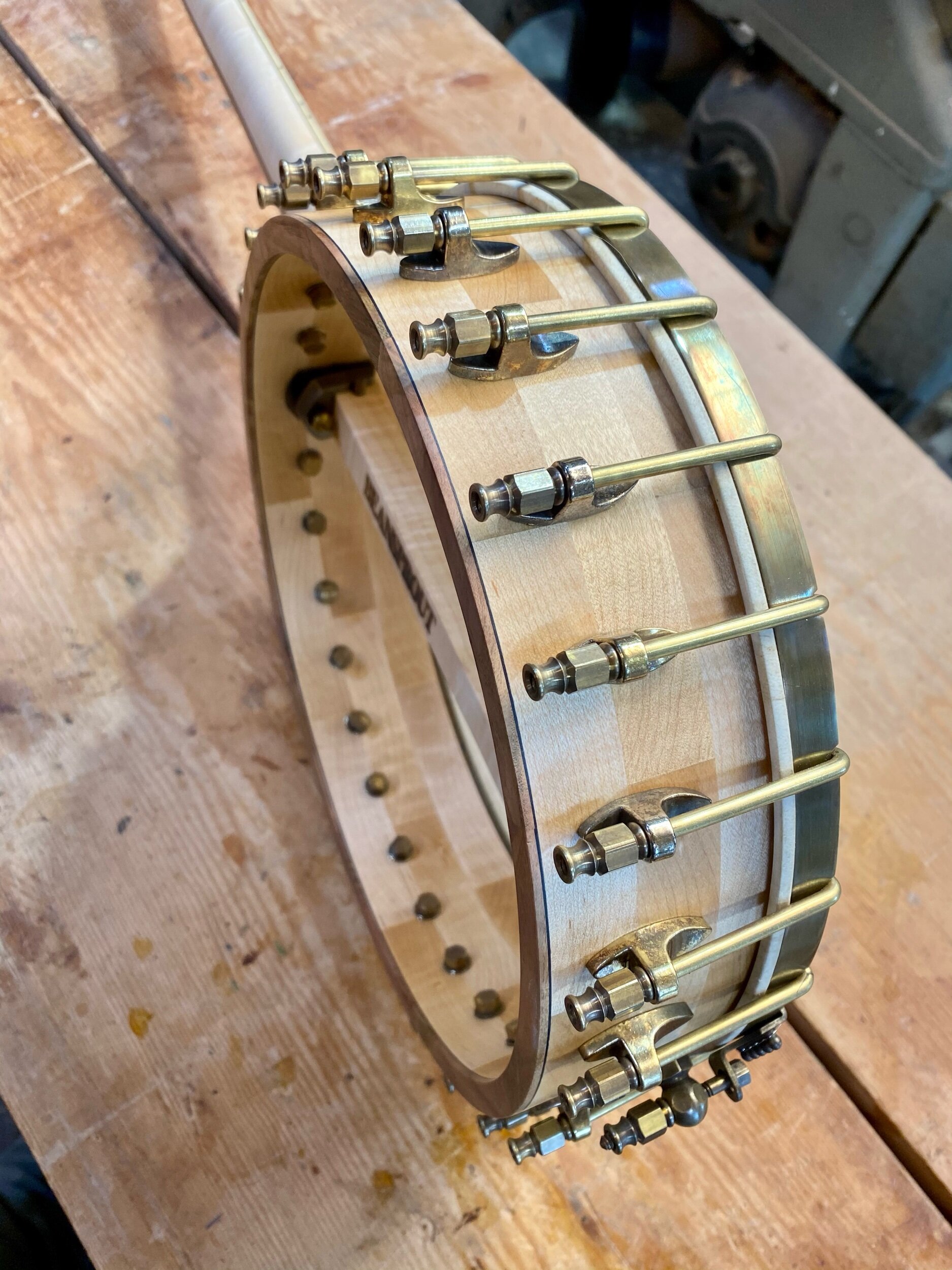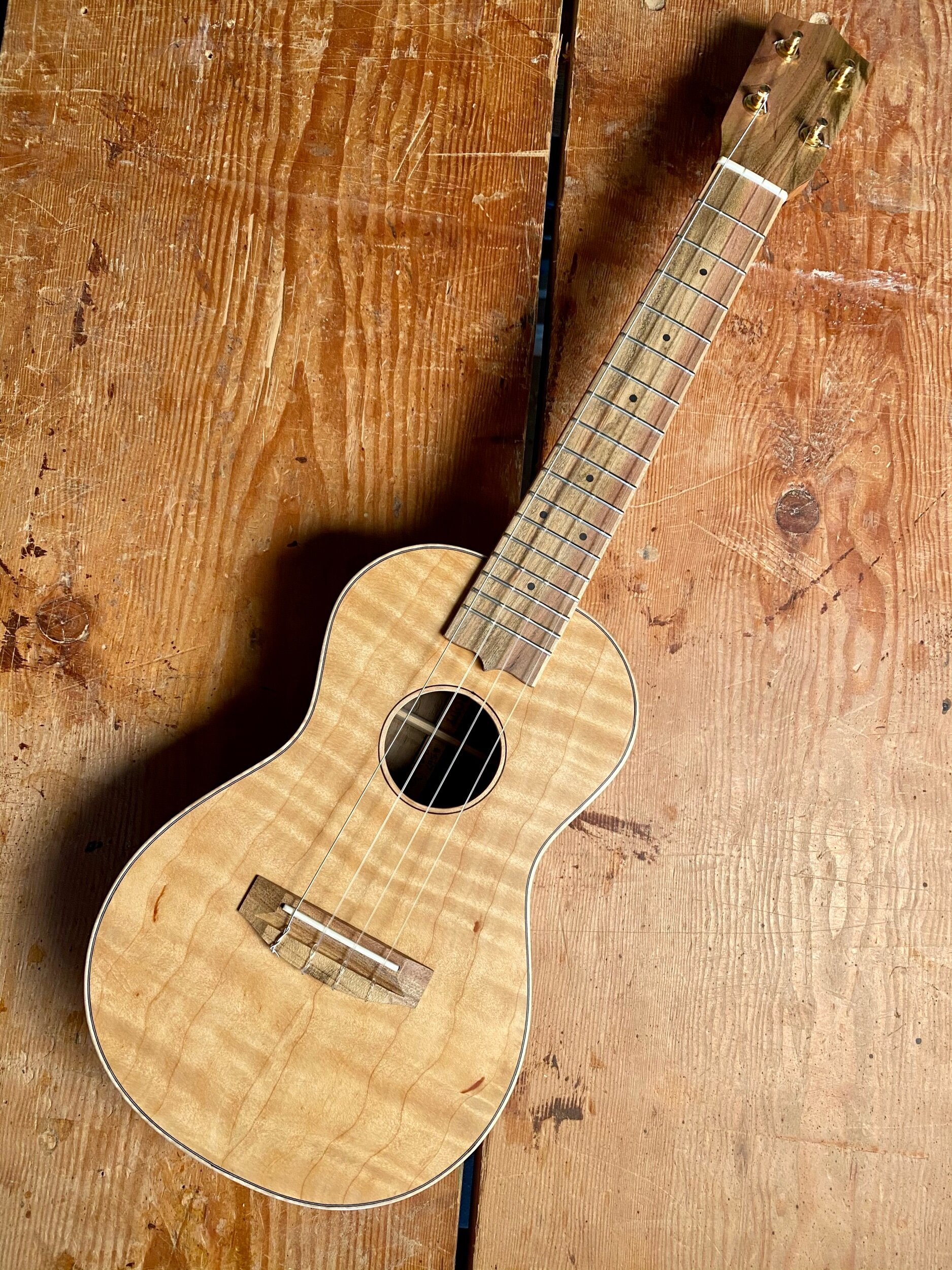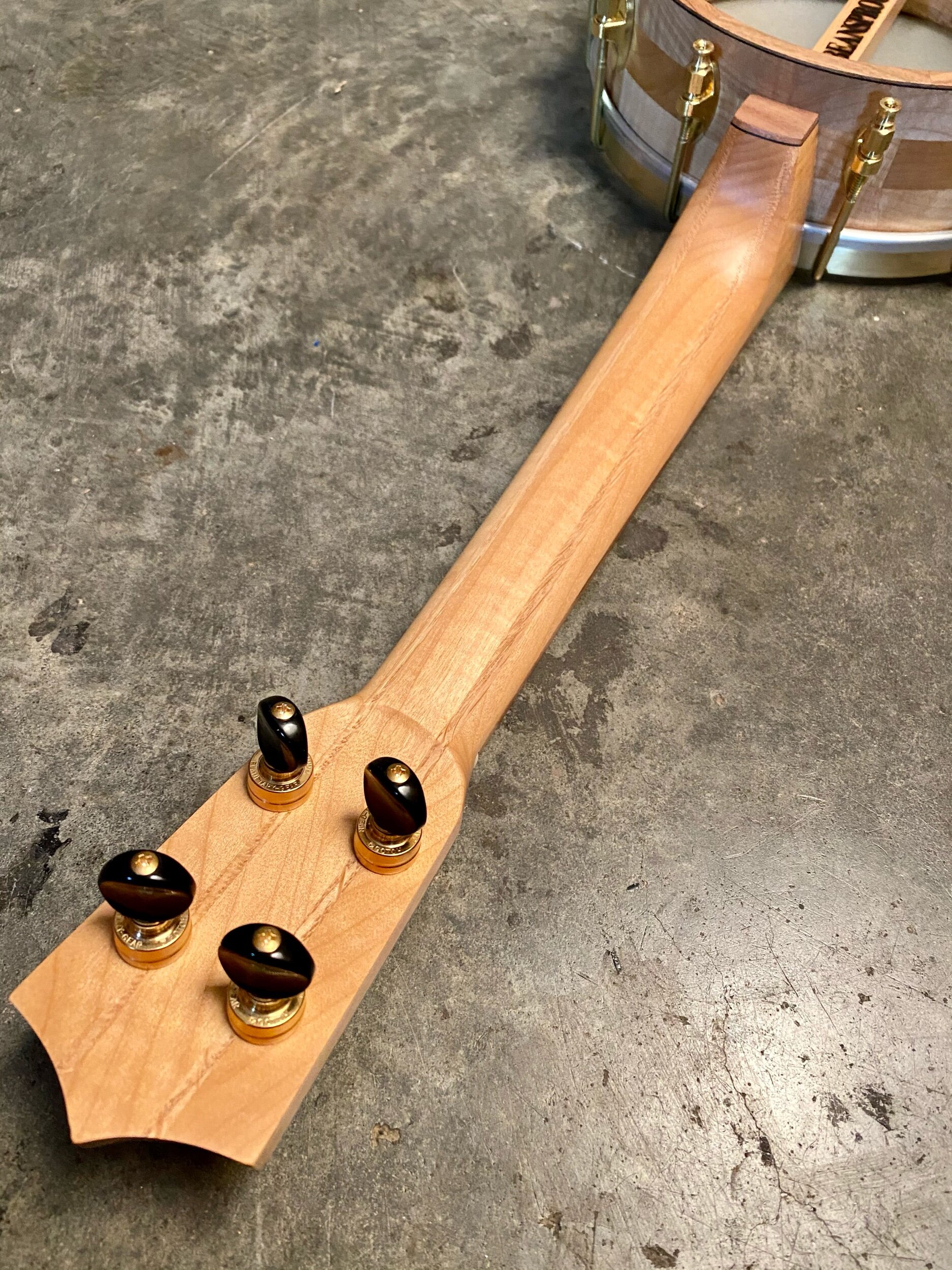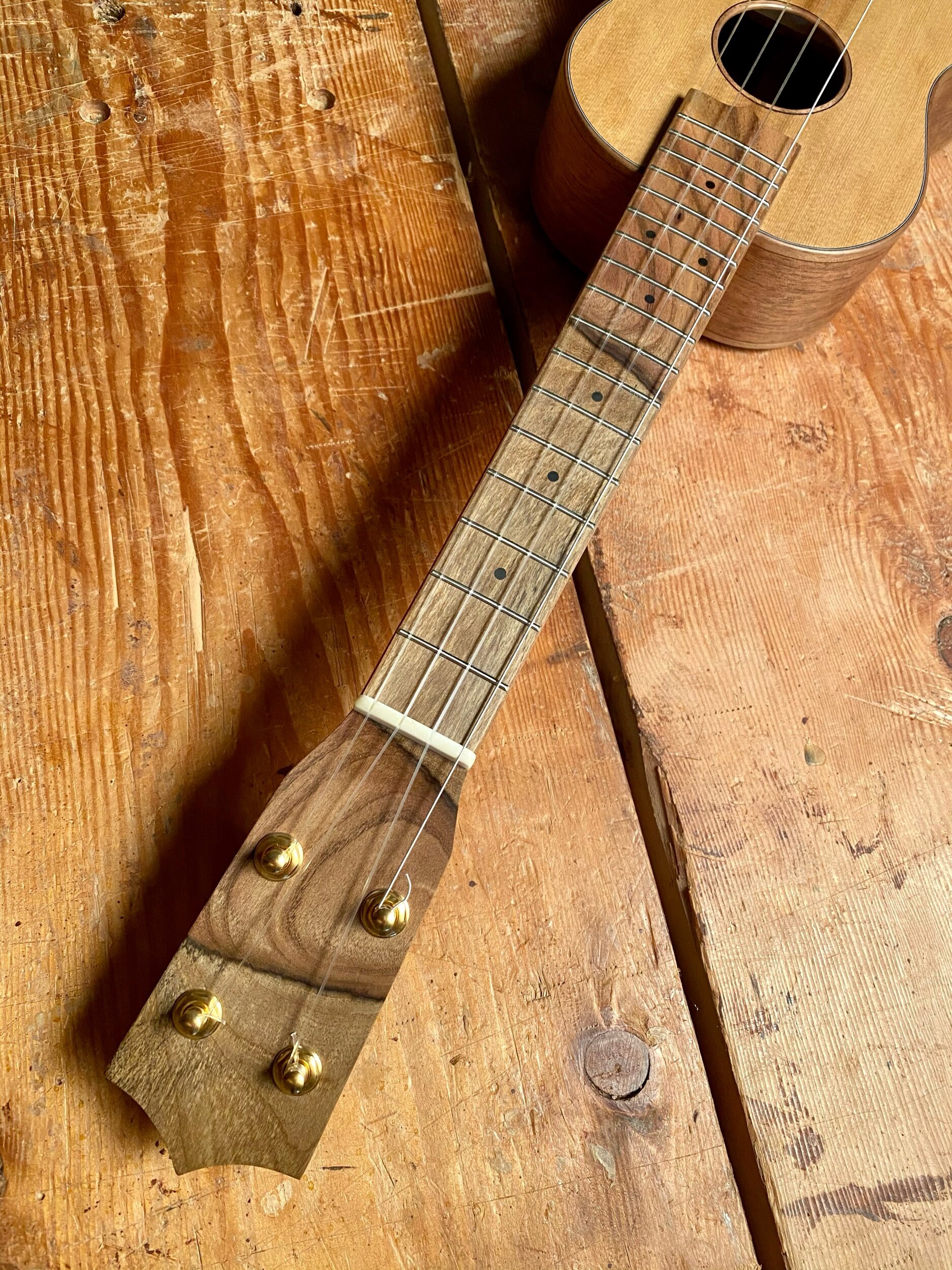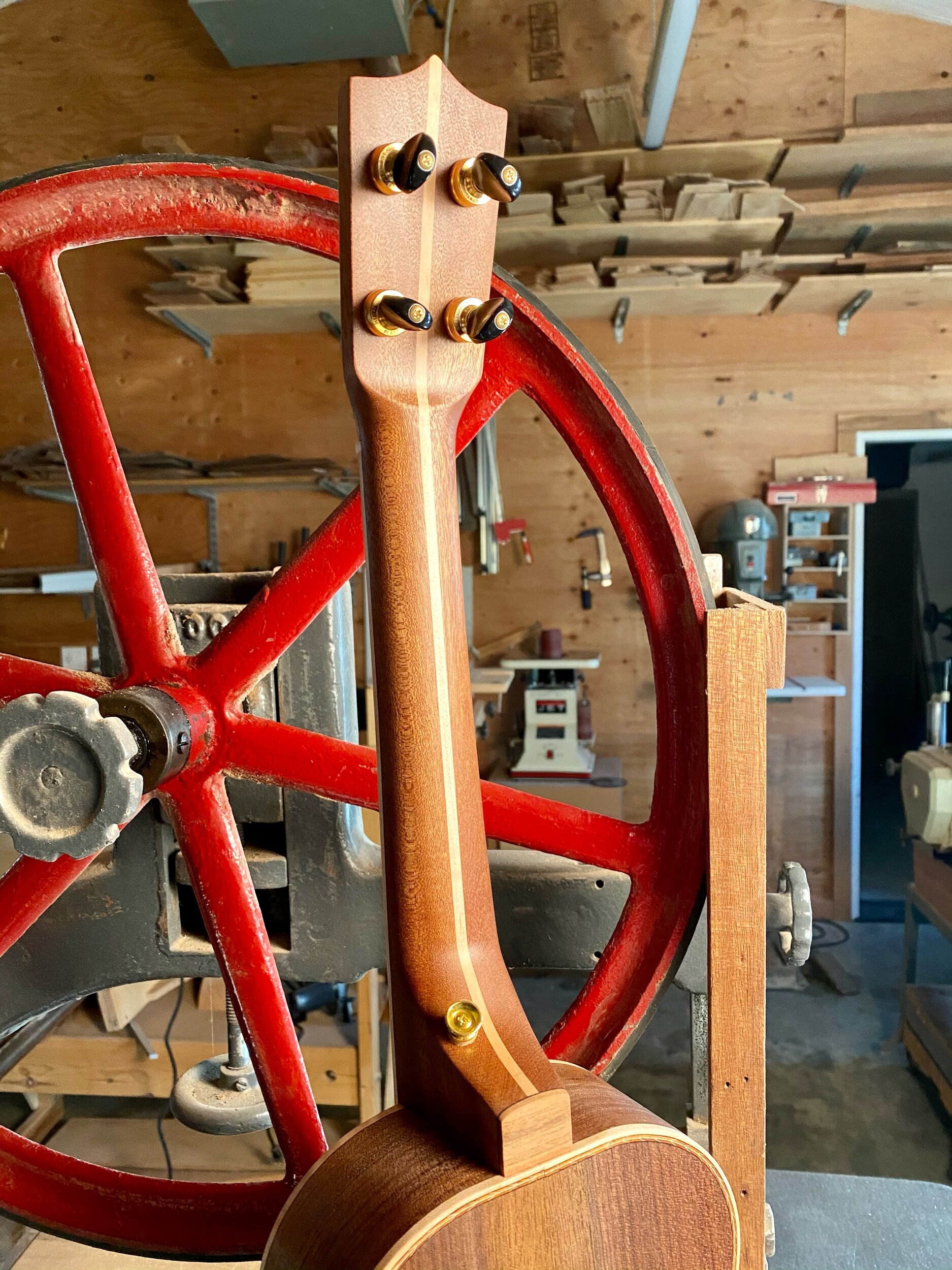This is the second banjo I have made of this design, pairing an 11” rim with a 20” scale neck. It’s lightweight, comfortable and easy to play. It took me a day or two to adjust my playing style to get the most tone from it, but now I love it. The rim is maple and pistachio and the neck is cherry, all stained to match with the color rubbed back to be almost translucent. The goatskin head is dyed with walnut husks from our yard and the brass has been darkened to form a nice patina. All the wood is from the Carpenter Ant stash in Portland.
“I haven’t put this down since I received it several days ago! It is a beautiful instrument with a beautiful sound. The sound is deep and plenty loud. I am able to tune it to G and lower because of the custom string set Aaron created. The fretboard is the most comfortable I have ever played. The short scale is great as I have had some surgeries on my hands, but I would love this even if I hadn’t. Thank you for such a carefully-made instrument.
- B. C. ”





